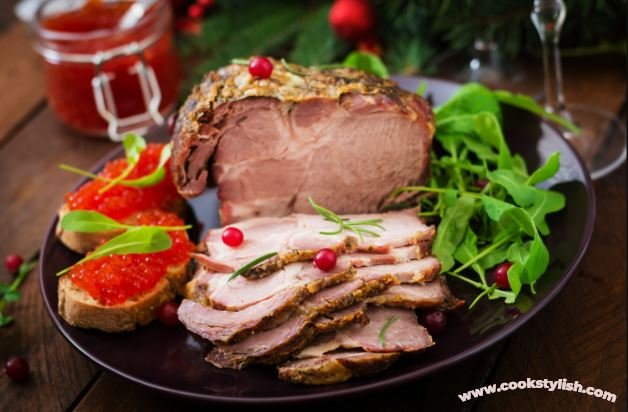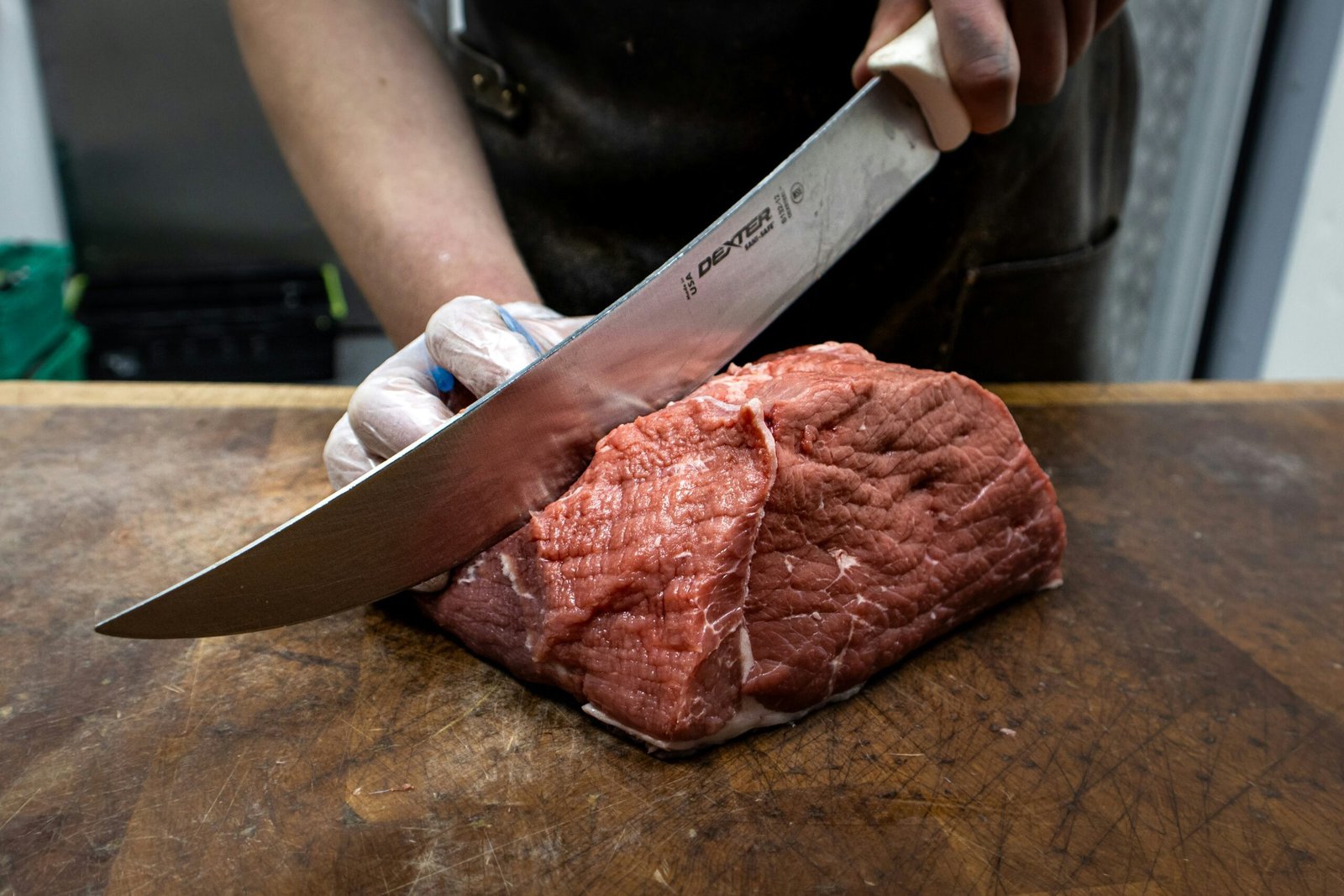Understanding Cooked Ham: Types and Varieties
Cooked ham is a versatile ingredient that enhances a variety of dishes. It is essential to differentiate between its various types and varieties to fully appreciate its culinary potential. Broadly categorized, cooked ham can be classified into two main types: city ham and country ham. City ham is typically wet-cured, which involves soaking the meat in a brine solution containing water, salt, sugar, and often additional seasonings. This method results in a moist, tender texture and a milder flavor. Commonly found in supermarkets, city ham is often sold spiral-sliced for convenience, making it ideal for sandwiches, salads, and festive gatherings.
In contrast, country ham undergoes a dry-curing process. This method involves rubbing the ham with salt and other flavor agents, then allowing it to cure over a longer period, sometimes with the addition of smoking. Country ham tends to possess a firmer texture and a robust, more intense flavor due to this seasoning process. It is often served in slices or used in cooking to impart deep flavors to dishes such as biscuits and gravy or savory pies. The strong characteristics of country ham may not appeal to everyone, so it is essential to consider personal preferences when selecting this type.
Beyond the city and country distinctions, cooked ham is further diversified through various curing methods such as honey glazed, maple cured, or smoked ham, each contributing unique flavor profiles. For instance, honey glazed ham features a sweet exterior, making it a popular choice for holiday dinners, while smoked ham adds a woody richness that can elevate casseroles and soups. When choosing the right cooked ham for a specific dish, understanding these varieties and their distinct flavor profiles will lead to a more satisfying culinary experience.
Health Benefits and Nutritional Value of Cooked Ham

Cooked ham is a popular choice among processed meats, known for its versatility and flavor. One significant health benefit of cooked ham is its high protein content. Protein is essential for building and repairing tissues in the body, making it a vital macronutrient for individuals with active lifestyles. A typical serving of cooked ham can provide around 20-25 grams of protein, contributing significantly towards daily protein intake requirements.
In addition to its protein content, cooked ham is also a source of several essential vitamins and minerals. It offers B vitamins such as B1 (thiamine) and B3 (niacin), which play crucial roles in energy metabolism and maintaining healthy skin. Furthermore, ham is a good source of phosphorus and selenium, both of which support various bodily functions, including bone health and immune response. The presence of these nutrients makes cooked ham a valuable addition to a balanced diet.
However, potential health concerns warrant consideration. One notable issue is the sodium content in many processed hams. Excessive sodium intake is linked to elevated blood pressure and cardiovascular problems, which may raise concerns among those with specific dietary restrictions. Therefore, it is advisable to monitor serving sizes and choose lower sodium options wherever possible. Moreover, there are discussions surrounding the consumption of processed meats, including ham, and their association with certain health risks. It is essential for consumers to be informed and to strike a balance in their diet.
In conclusion, while cooked ham offers considerable nutritional benefits, particularly its protein and vitamin content, it should be consumed judiciously. By being aware of portion sizes and selecting healthier varieties, individuals can enjoy cooked ham as part of a balanced diet.
The Art of Cooking Ham: Preparation and Cooking Techniques
Cooking ham is an art that can elevate a simple dish into a remarkable culinary experience. Achieving the perfect cooked ham involves several preparation and cooking techniques that enhance flavor and texture. One of the most popular methods is slow roasting, which allows the ham to cook evenly and maintain its moisture. For a slow-roasted ham, begin by preheating the oven to a low temperature, typically between 250°F and 325°F. Season the ham with a mixture of salt, pepper, and your favorite herbs, and apply a glaze to enrich its flavor.
Also Read: How to Cook Rib of Beef : From Roasted to Boneless Cuts
Another effective cooking technique is baking, which offers versatility in achieving the desired caramelization on the surface of the ham. After seasoning, place the ham in a roasting pan, ensuring that it is fat-side up. Cover the pan with aluminum foil and bake for several hours, removing the cover during the last 30 minutes to allow the outside to crisp up. To achieve an impressive finish, consider glazing the ham with a mixture of honey, brown sugar, mustard, or fruit preserves, which creates a beautiful finish and adds depth to the flavor.
Marination is another essential step that can enhance the taste of your cooked ham further. A simple marinade using ingredients like apple cider, soy sauce, or spices can infuse the meat with flavor before cooking. Allow the ham to marinate for several hours or overnight if possible. If you encounter common issues, such as dryness, be sure to baste the ham periodically with its juices or additional glaze during the cooking process, which helps to keep it moist. Additionally, utilizing a meat thermometer ensures that you achieve the ideal internal temperature, around 145°F for optimal tenderness and juiciness. By mastering these techniques, anyone can prepare a ham that delights the palate and impresses guests.
Creative Ways to Use Cooked Ham in Recipes
Cooked ham is an incredibly versatile ingredient that can elevate many dishes, making it a favored choice in culinary applications. Whether you have leftover ham from a holiday feast or you simply want to incorporate this delightful protein into your meals, there are numerous imaginative ways to utilize cooked ham in recipes.
Starting off with breakfast, one cannot overlook the classic combination of ham and eggs. A simple yet nourishing breakfast can be made by scrambling eggs and adding diced cooked ham along with vegetables like bell peppers and spinach. For a heartier option, consider a ham and cheese omelet. The savory notes from the ham pair excellently with the richness of cheese, creating a filling and satisfying meal to start your day.
For lunch or dinner, cooked ham can find its place in vibrant salads or nourishing soups. A refreshing ham salad can be made by combining diced ham with fresh greens, cherry tomatoes, and a light vinaigrette, offering a quick and healthy meal option. Alternatively, a ham and pea soup is a comforting dish that leverages the flavor of cooked ham, providing warmth on cooler days.
Sandwiches are another fantastic way to enjoy cooked ham. A classic ham sandwich can be jazzed up with ingredients like mustard, cheese, and pickles, layer upon layer creating a delightful blend of flavors. Experimenting with different types of bread, such as a crusty baguette or a soft ciabatta, can also enhance your sandwich experience.
To minimize waste, consider repurposing leftover cooked ham in a variety of recipes. From savory quiches to pasta bakes, the options are extensive. Incorporating this delicious meat into your meals not only adds flavor but also prevents food waste, making it a sustainable cooking choice. With these ideas, you’ll find that cooked ham can indeed be a culinary delight.


